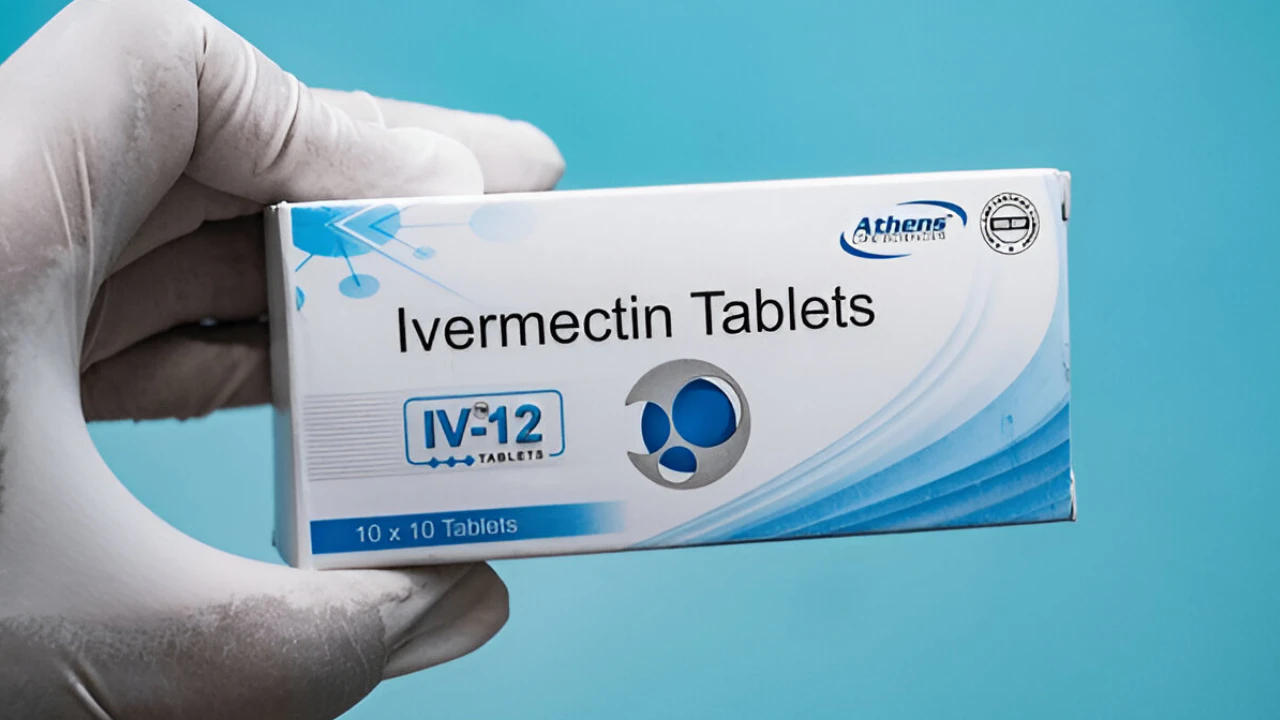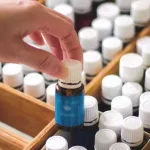Have you ever wondered if there’s a liquid version of ivermectin out there for humans? Maybe a friend mentioned it, or you stumbled across it online. You’re not alone—lots of folks are curious about this medication, especially with all the buzz it’s gotten lately. I get it; it’s natural to want to explore your options when it comes to your health. So, let’s chat about liquid ivermectin—what it is, how it’s used, and what you should keep in mind if you’re thinking about it. In recent years, ivermectin has popped up in conversations for both its approved uses and some off-label chatter. But today, we’re sticking to the facts and focusing on how liquid ivermectin can be a real option for some people.
Let me tell you about my friend Claire. She’s never been a fan of swallowing pills—honestly, they make her gag just thinking about it. So when her doctor prescribed ivermectin for a parasitic infection, she was thrilled to hear there was a liquid form. It turned her treatment from a chore into something manageable. And Claire’s not the only one. Kids, older folks, or anyone who struggles with pills can find liquid meds a lifesaver. But here’s the thing: like any medication, it’s got its upsides and downsides, and I want to walk you through both so you’ve got the full picture.
Liquid ivermectin can be a game-changer if tablets aren’t your thing. It’s easier to swallow and lets you dial in the exact dose you need. But it’s not all sunshine and rainbows—there are risks, like mild side effects or even serious reactions if it’s not used right. And don’t get me started on the dangers of grabbing the animal version by mistake. That’s why I’m here to break it down for you—think of this as a friendly chat about what liquid ivermectin dosage for humans really means, so you can feel confident and informed.
What is Liquid Ivermectin?

So, what exactly is liquid ivermectin? You might be more familiar with the tablet version, but the liquid form exists too, and it’s typically made by special pharmacies called compounding pharmacies. These places can whip up a customized 1% solution—that’s about 10 milligrams of ivermectin per milliliter (mg/mL) (according to information from Bayviewrx.com). It’s not something you’ll find on every drugstore shelf, but it’s a legit option for people who need it. Think of it as a tailored solution for folks who can’t handle pills, like kids or seniors.
How is it different from tablets?
The big difference is how you take it. Tablets? You pop ‘em in your mouth and swallow. Liquid ivermectin? You measure it out—usually with a little syringe or dropper—and drink it, often with a glass of water. Both have the same active ingredient, ivermectin, but the liquid gives you more control over the dose, especially if it needs to be adjusted for your weight. Some say it might absorb a bit differently in your body, but when it’s dosed right, it works just as well as the tablets. The trick is getting that dose spot-on, which is why your doctor’s guidance is key.
Where can you get it?
You’re not going to walk into your local pharmacy and grab this off the shelf—it’s prescription-only. Your doctor will write you a script, and then you’ll need to find a compounding pharmacy to make it for you. Not sure where to start? Ask your doc—they’ll usually point you to a good one. Just make sure it’s a reputable place that follows safety rules. Oh, and a quick heads-up: steer clear of ivermectin made for animals. It’s a totally different beast and can seriously mess you up if you use it. Stick to the human stuff, okay?
Uses of Liquid Ivermectin
Liquid ivermectin does the same job as the tablets—it’s all about kicking parasitic infections to the curb. It’s been studied for other things too, but we’re keeping it simple here and focusing on what it’s approved for. Let’s look at some of the main conditions it tackles.
Strongyloidiasis

Ever heard of threadworms? They’re behind strongyloidiasis, an intestinal infection that can give you belly pain or diarrhea—or sometimes no symptoms at all. It’s more common in warm, tropical spots, but it can show up anywhere. Liquid ivermectin dosage for humans here is usually 0.2 mg per kilogram of body weight, taken once. The liquid form shines because it’s easy to tweak the dose to get those parasites gone for good.
Onchocerciasis

This one’s also called river blindness, and it’s caused by blackfly bites. Left untreated, it can damage your eyesight, which is why treatment matters. In some parts of the world, they use ivermectin in big programs to keep it under control. The dose is typically 0.15 mg/kg, taken every 12 months. Liquid ivermectin can be a big help here, especially for folks who can’t swallow tablets.
Other conditions

It doesn’t stop there. Liquid ivermectin can also tackle ascariasis (roundworms), cutaneous larva migrans (from soil parasites), and scabies (those itchy mites). Dosages are usually similar to strongyloidiasis—around 0.2 mg/kg—but scabies might need a couple of rounds to make sure every last mite is history. Your doctor will sort out what’s best for you.
How is Liquid Ivermectin Dosage Calculated?
Okay, let’s get into the nitty-gritty: how do you figure out your liquid ivermectin dosage for humans? It’s all about your weight and what you’re treating. Your doctor looks at those details—plus anything else going on with your health—to set the right amount. For kids, this step is extra careful to avoid too much or too little. Take strongyloidiasis: it’s 0.2 mg per kg. If you’re 70 kg (about 154 pounds), that’s 14 mg of ivermectin.
Converting to liquid volume
Now, how do you turn that into liquid? If it’s a 1% solution (10 mg/mL), 14 mg means 1.4 mL. Easy, right? Let’s try another example: if you’re 50 kg, that’s 10 mg, or 1 mL of the 1% stuff. But if the pharmacy mixes a weaker 0.5% solution (5 mg/mL), you’d need 2 mL for 10 mg (according Drugs.com). It’s just math, but don’t wing it—check with your pharmacist to make sure you’ve got it right. These are just examples anyway; your doctor’s the one calling the shots here.
Benefits of Liquid Ivermectin
Why go liquid? It’s got some pretty cool perks, especially if pills aren’t your vibe. In hospitals, it can even go through feeding tubes, which tablets can’t do. That kind of flexibility can make a big difference.
Easier to swallow
If you’ve got a gag reflex like Claire’s—or maybe a condition that makes swallowing tough—liquid ivermectin is a dream. No choking down a pill; just measure, sip, and you’re done. It’s a relief for anyone who dreads that part of taking meds.
Precise dosing
Tablets come in set sizes, and sometimes you have to split them to get the right dose—not exactly foolproof. With liquid, you can measure out exactly what you need, down to the drop. That’s huge for kids or when your dose doesn’t match a standard tablet.
Improved outcomes
When it’s easier to take your meds right, you’re more likely to stick with it—and that means better results. For parasites, you’ve got to wipe them out completely, or they’ll just come back. Liquid ivermectin makes that a little simpler.
Risks and Side Effects

Now, let’s talk about the flip side. Every med has risks, and liquid ivermectin is no exception. Knowing what to watch for can help you catch anything weird early. Most people handle it fine, but it’s good to be prepared.
Common side effects
You might feel a bit dizzy or queasy, or maybe notice a rash. These are pretty common and usually no big deal. But if they stick around or get worse, give your doctor a shout. A rash could mean you’re reacting to it, so don’t ignore it.
Serious reactions
In rare cases, things can get more intense—like allergic reactions or brain-related symptoms, especially if you’ve got a ton of parasites dying off at once. That’s called a Mazzotti reaction, and it might bring fever or itching. Your doc will keep an eye on you if that’s a risk.
Misuse dangers
Here’s a big one: don’t use animal ivermectin. The FDA’s been loud about this—it’s not the same as the human stuff and can land you in the hospital. Stick to what your doctor prescribes, and you’ll steer clear of trouble.
How to Take Liquid Ivermectin
Taking it right is everything. Your doctor or pharmacist will give you the rundown, but generally, you’ll take liquid ivermectin on an empty stomach with a full glass of water. Follow their lead—it’s the best way to make it work.
What if I miss a dose?
Forget a dose? No panic. Take it when you remember, unless it’s almost time for the next one—then just skip it. Doubling up’s a no-go; stick to the plan and you’ll be fine.
Preparation and Storage of Liquid Ivermectin
Wondering how it’s made? Compounding pharmacies mix the ivermectin into a liquid base, bottle it up, and slap on a label with your dosing info. It’s custom-made just for you.
How is it stored?
Keep it at room temp, away from sunlight and damp spots. Oh, and stash it where kids and pets can’t get to it—safety first!
Shelf life
It’s usually good for 30 to 90 days, depending on how it’s made. Check the expiration date on the bottle, and toss it if it’s past due.
Interactions with Other Medications
Ivermectin can play tricky with some drugs, so tell your doctor everything you’re taking. They’ll make sure it all jives.
Common interactions
For instance, it might mess with blood thinners like warfarin, upping your bleeding risk. Or it could tangle with meds that affect your liver. Your doc’s got your back on this.
What to do
They’ll look over your med list and tweak things if needed—maybe adjust doses or switch something out. Trust them to sort it.
Conclusion
So, there you have it—liquid ivermectin dosage for humans in a nutshell. It’s a solid choice for treating parasites, especially if tablets don’t work for you. It’s got perks like easy dosing, but you’ve got to use it under a doctor’s watch to keep the risks in check. Thinking it might be for you? Chat with your healthcare provider—they’ll walk you through it and make sure it’s safe. This isn’t something to mess around with on your own, so lean on the pros. And after you’re done with treatment, they might want a follow-up to check everything’s clear—especially with stuff like scabies that can sneak back. Got more questions? Your doctor’s your go-to. Stay smart, stay safe!


















Leave a Reply
You must be logged in to post a comment.